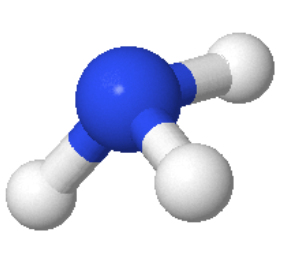
 |
Problem 1
Ammonia consists of one nitrogen atom and three hydrogen atoms. Nitrogen has 7 protons.
(a) What is the molecular orbital Hamiltonian for ammonia?
(b) How could you calculate the H-N-H angle of an ammonia molecule?
(c) How many molecular orbitals are filled in the ground state of ammonia?
(d) Are the N-H bonds σ-bonds or π-bonds? Why?
(e) How many translational, vibrational, and rotational modes does ammonia have?
Problem 2
Below is the phonon dispersion relation for a crystal with an fcc Bravais lattice. The lattice constant is a = 0.2 nm.
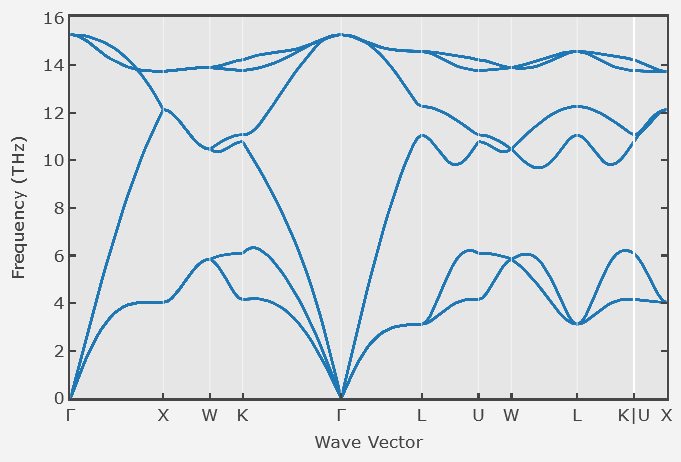 | 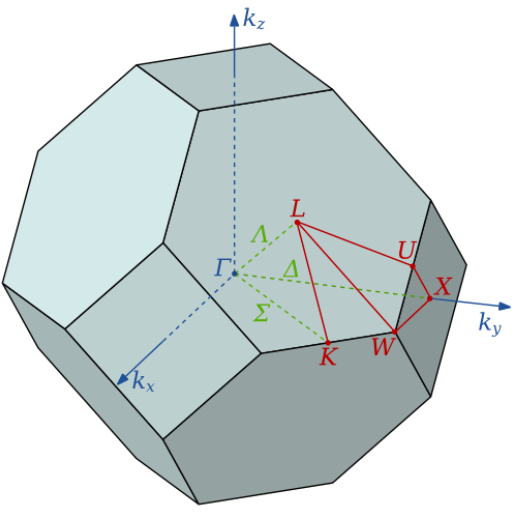 |
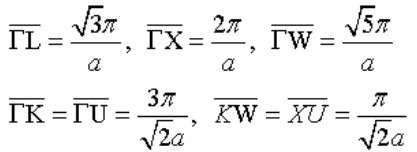 |
(a) How many atoms are there in the primitive unit cell?
(b) Choose a direction and a polarization (longitudinal or transverse) and estimate the speed of sound in this direction for long-wavelength sound waves.
(c) What is the shortest phonon wavelength possible in this crystal?
(d) What is the mean number of phonons in the phonon mode with the highest energy at 300 K?
Problem 3
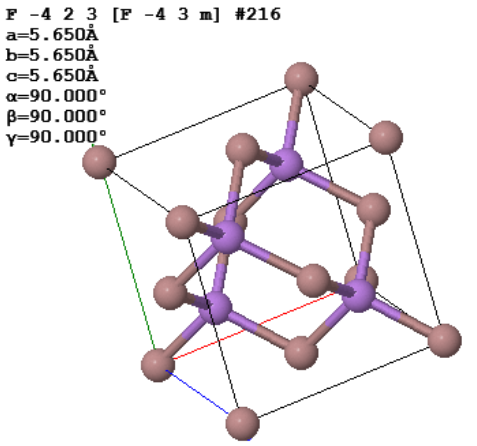 |
GaAs is a semiconductor with a zincblend crystal structure. The bandgap is 1.43 eV.
(a) What is the Bravais lattice of GaAs?
(b) The (100) plane of GaAs is drawn below together with the corresponding LEED pattern. The large spot in the middle of the LEED pattern is $|\vec{G}|=0$. Draw the primitive lattice vectors of the conventional unit cell and the primitive lattice vectors of the reciprocal lattice. Be sure that your vectors satisfy the relation $\vec{a}_i\cdot\vec{b}_j = 2\pi \delta_{ij}$.
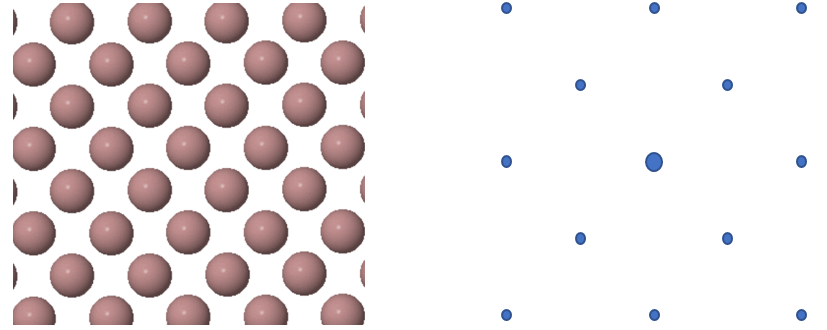
(c) Additional atoms (green) adsorb on the surface in a periodic pattern. Draw in the additional diffraction peaks in reciprocal space.
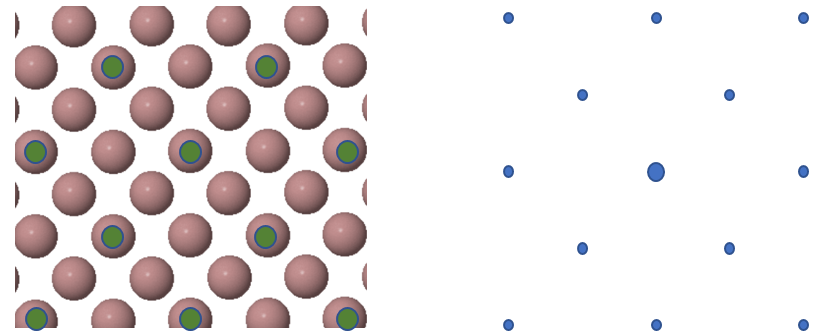
(d) In x-ray diffraction, there are typically hundreds or thousand of diffraction peaks. For LEED, there are usually much few peaks. Assuming that the only diffraction peaks are the ones that are shown, estimate the wavelength of the electrons. (You will need to know the length of $|\vec{b}_1| = |\vec{b}_2|$.)
Problem 4
State whether the following materials are metals, semiconductors, or insulators. Briefly explain your reasoning in each case. It can happen that you cannot tell if a material is a semiconductor or an insulator. Write semiconductor/insulator in this case, and explain why you can't tell.
(a) The specific heat at low temperatures is proportional to temperature.
(b) The material is transparent to visible light.
(c) The electrical conductivity improves dramatically when infrared light shines on this material.
(d) The density of states at the chemical potential is zero.
(e) A one-dimensional conductor with three valence electrons per primitive unit cell.
(f) The electrical conductivity increases as temperature increases.
(g) The phonon contribution to the internal energy density dominates at room temperature.
Solution